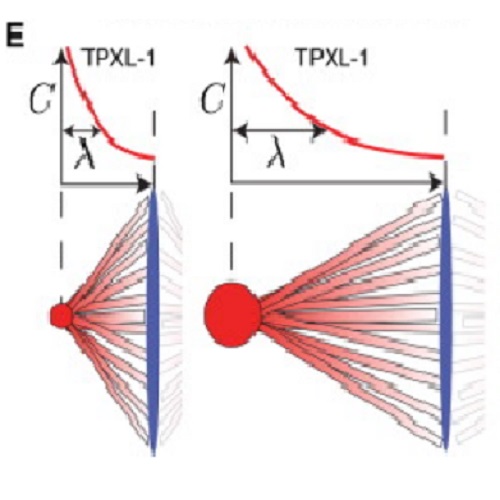Centrosome size sets mitotic spindle length in Caenorhabditis elegans embryos.
Just as the size of an organism is carefully controlled, the size of intracellular structures must also be regulated. The mitotic spindle is a supramolecular machine that generates the forces which separate sister chromatids during mitosis. Although spindles show little size variation between cells of the same type, spindle length can vary at least 10-fold between different species. Recent experiments on spindle length showed that in embryonic systems spindle length varied with blastomere size. Furthermore, a comparison between two Xenopus species showed that spindle length was dependent on some cytoplasmic factor. These data point toward mechanisms to scale spindle length with cell size. Centrosomes play an important role in organizing microtubules during spindle assembly. Here we use Caenorhabditis elegans to study the role of centrosomes in setting spindle length. We show that spindle length correlates with centrosome size through development and that a reduction of centrosome size by molecular perturbation reduces spindle length. By systematically analyzing centrosome proteins, we show that spindle length does not depend on microtubule density at centrosomes. Rather, our data suggest that centrosome size sets mitotic spindle length by controlling the length scale of a TPXL-1 gradient along spindle microtubules.

- Curr. Biol. 2010 Feb 23;20(4):353-8
- 2010
- Developmental Biology
- 20137951
- PubMed
Enabled by:
